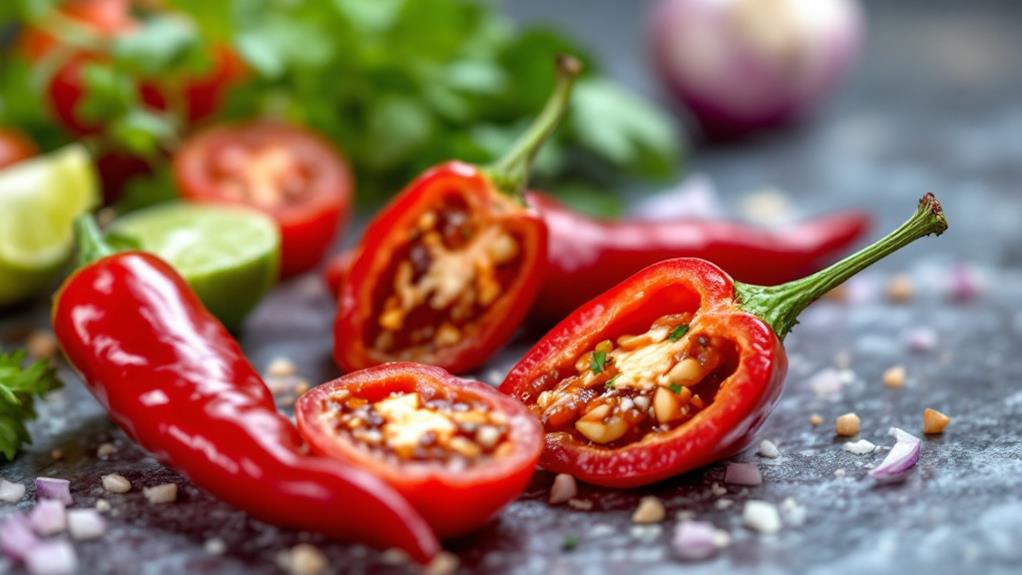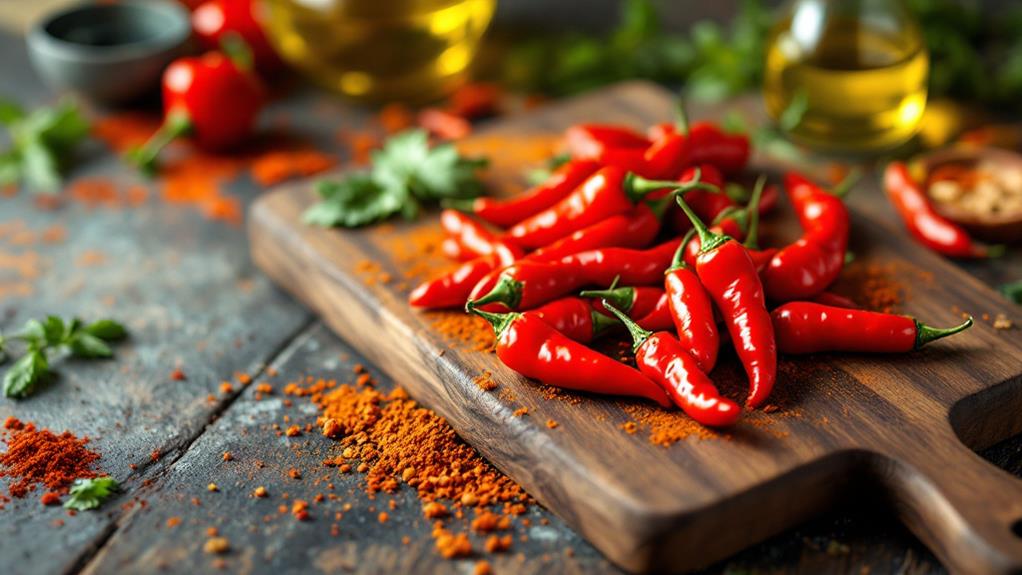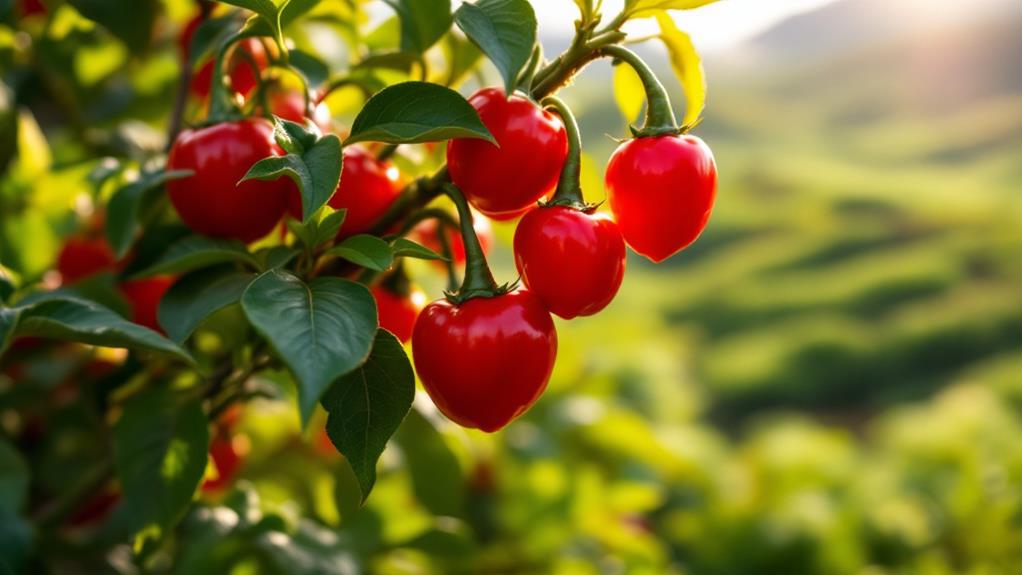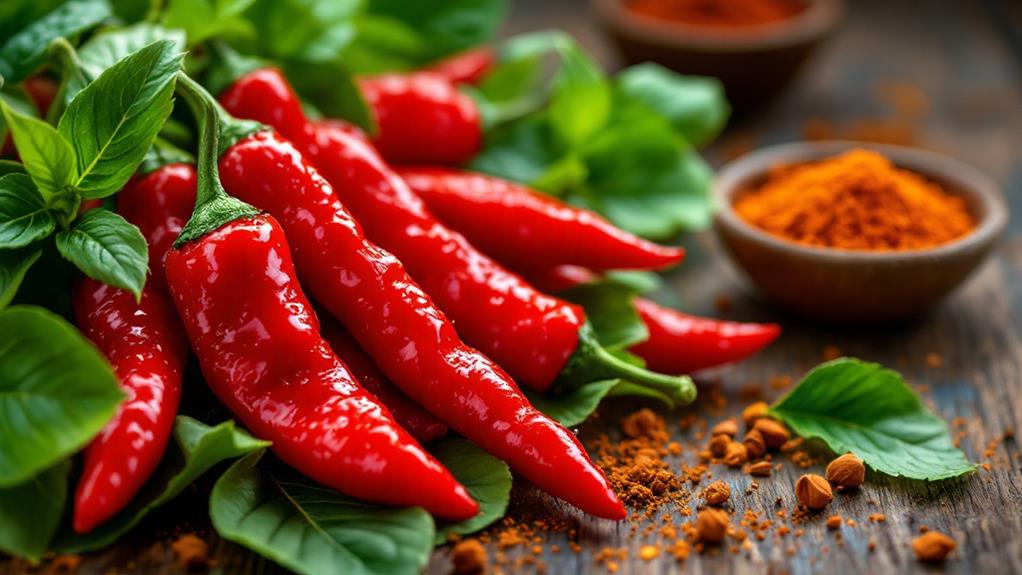The Komodo Dragon Chili Pepper: How Hot Is It Really?
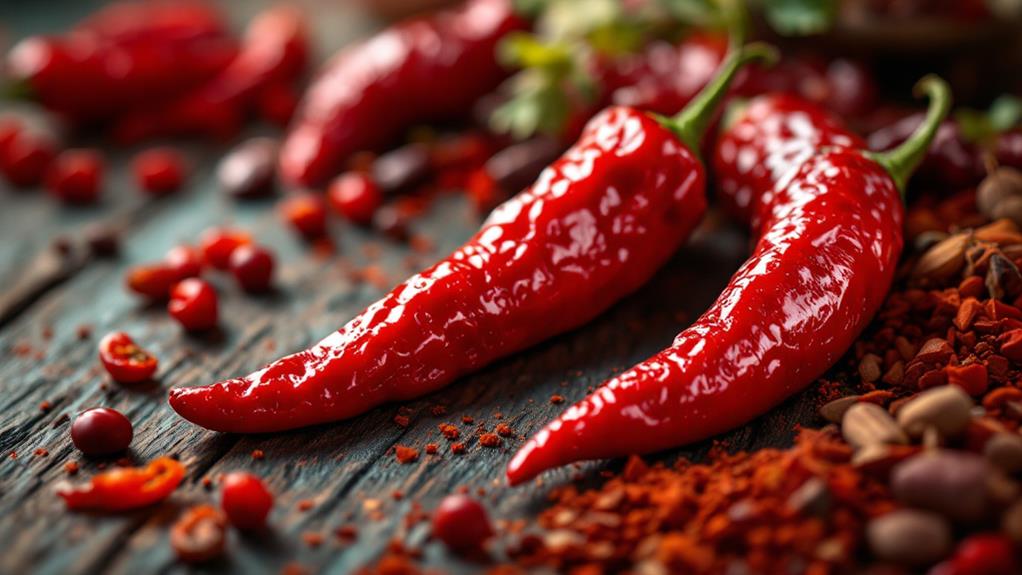
You're probably wondering just how fiery the Komodo Dragon chili pepper really is. On the Scoville scale, it ranges from 1.4 million to 2.2 million SHU, making it a serious contender among the world's hottest peppers. To put that in perspective, it's 175 to 880 times hotter than a jalapeño. The heat builds slowly and intensely, with a delayed burn that catches many off guard. Not just about heat, it also offers a sweetness and fruity flavor, enhancing its culinary charm. Explore deeper and you'll uncover more on its compelling flavor and intriguing characteristics.
Scoville Scale Explained
The Scoville scale is your guide to understanding the heat of chili peppers, measuring their spiciness in Scoville heat units (SHU). Developed by Wilbur Scoville in 1912, this scale quantifies the pungency of peppers by gauging the concentration of capsaicinoids, primarily capsaicin. Originally, the heat measurement involved human tasters diluting chili extracts in sugar water until the heat was no longer detectable. While this method was pioneering, it had its limitations regarding accuracy and consistency.
Nowadays, high-performance liquid chromatography (HPLC) offers a more precise approach to determining a pepper's heat. This method measures the parts per million (ppm) of capsaicinoids, converting the result to SHU by multiplying the ppm by 16. This guarantees that each chili pepper's heat is accurately represented.
It's significant to note that Scoville ratings can be tricky when comparing fresh to dried peppers or sauces due to water content differences. The scale covers a vast range, from the mild bell peppers at 0 SHU to the fiery Carolina Reaper exceeding 3 million SHU. This variability highlights the remarkable diversity in heat levels found in chili peppers.
Measuring Chili Heat
Understanding chili heat begins with the Scoville scale, your go-to tool for measuring the spiciness of peppers like the Komodo Dragon. This scale quantifies the pungency of chili peppers in Scoville heat units (SHU), offering a precise way to gauge their intensity. The Komodo Dragon pepper has a remarkable SHU range, sitting between 1.4 million and 2.2 million, placing it among the world's hottest peppers. But how exactly is this heat measured?
- Scoville Organoleptic Test: Initially, the Scoville scale relied on human tasters who diluted pepper extracts until they no longer felt heat. Though traditional, it's subjective and less reliable.
- High-Performance Liquid Chromatography (HPLC): This modern method measures capsaicin concentration accurately, providing a more consistent SHU reading for peppers like the Komodo Dragon.
- Variability Factors: Growing conditions and testing methods can cause variations in SHU ratings, impacting the perceived heat level.
- Comparison to Common Peppers: The Komodo Dragon is considerably hotter, being 175 to 880 times spicier than a jalapeño, which ranges from 2,500 to 8,000 SHU.
Komodo Dragon Heat Level
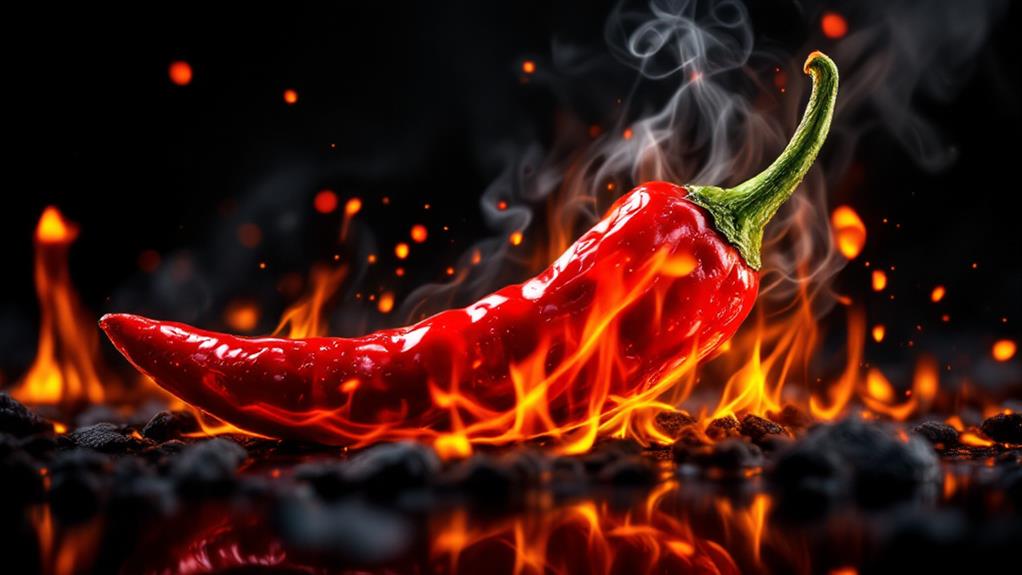
Ever wondered how hot a chili pepper can get? The Komodo Dragon pepper is a fiery contender, boasting Scoville heat units (SHU) ranging between 1.4 million and 2.2 million. This places it among the hottest peppers in the world, comparable to the infamous Carolina Reaper. If you're familiar with jalapeños, imagine something 175 to 880 times hotter—that's the scorching reality of this super-hot chili.
The Komodo Dragon's heat level doesn't hit you immediately; it's a slow burn that intensifies, providing a prolonged spicy experience. Some growers have observed variations in its heat, sometimes resembling the Bhut Jolokia (Ghost Pepper), which maxes out just over 1 million SHU. This variability makes each Komodo Dragon pepper a unique adventure in heat.
Handling such potent peppers requires caution. You should wear gloves and goggles to protect yourself from its intense heat. The Komodo Dragon pepper doesn't just offer heat; it's a capsaicin-packed powerhouse that demands respect. Regardless of whether you're a chili enthusiast or a daring cook, knowing the heat level of the Komodo Dragon will help you appreciate and handle one of the world's super-hot chilies.
Flavor Profile Insights
Imagine biting into a Komodo Dragon pepper and being greeted by a surprising burst of sweetness and fruity undertones. This primary taste experience is quite deceptive, as the sweetness gives way to a slow-building heat that can catch you off guard. The complexity of the Komodo Dragon's flavor profile is what makes it a standout among super-hot chili varieties. Here are some key insights into its flavor:
- Sweetness Initially: You'll notice the sweet, fruity flavors at first, making it seem less intimidating before the heat takes over.
- Heat Intensifies: As you continue to savor it, the heat intensifies, overshadowing the initial sweetness but enhancing the comprehensive experience.
- Culinary Versatility: Thanks to its unique combination of flavors, the Komodo Dragon is ideal for hot sauces, salsas, and even creative culinary experiments.
- Flavor Variation: Depending on which part of the pepper you consume, from the thicker walls to the seeds, the flavor profile can vary, offering even more culinary possibilities.
This pepper's ability to surprise with its blend of sweetness and heat makes it a favorite among chefs and chili enthusiasts seeking to push flavor boundaries.
Physical Characteristics
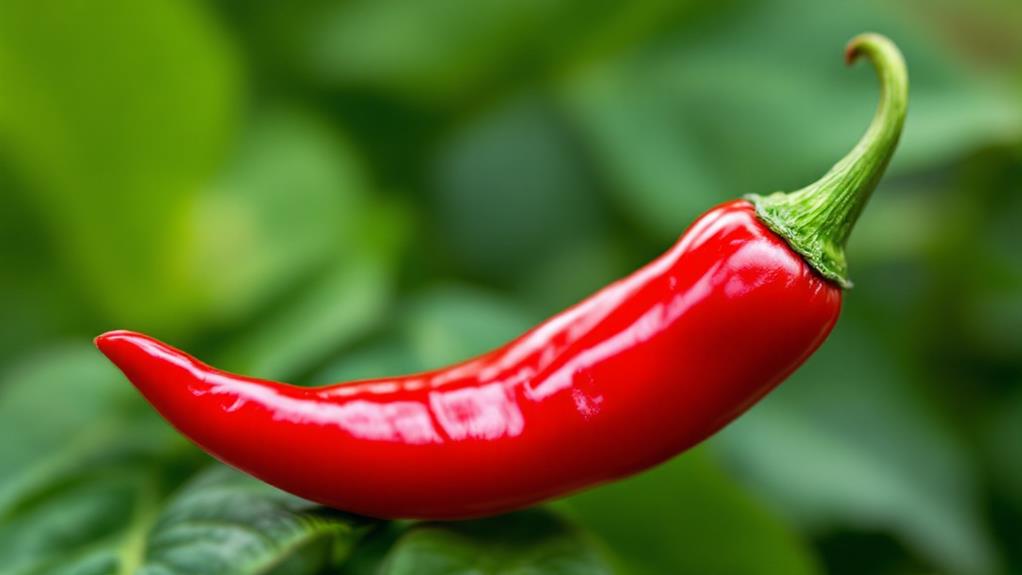
After exploring the intriguing flavor profile of the Komodo Dragon pepper, let's examine its striking physical characteristics. This super-hot chili pepper, measuring about two inches in length, has a slim shape that might remind you of other fiery varieties like ghost peppers and naga peppers. As you observe the Komodo Dragon, you'll notice its unique skin, complete with twists, turns, and random pockmarks, setting it apart from other chili peppers. As it matures, this pepper shifts from green to a lively red, following the common color change seen in many chili varieties.
One of the key features contributing to the Komodo Dragon's heat is the thick placenta growth along its walls. This feature is essential in giving it a high Scoville heat unit rating, making it a formidable contender among super-hot peppers. You'll also find that the Komodo Dragon has a slight pointed end, a characteristic it shares with many chili peppers, yet its surface is smoother and less wrinkled than some of its fiery counterparts. These physical characteristics make the Komodo Dragon not just a powerhouse of heat but also a visually striking enhancement to the world of chili peppers.
Culinary Uses
Some peppers bring an exciting challenge to the kitchen, and the Komodo Dragon chili pepper is no exception. Known for its intense Scoville heat units (SHU), this hot pepper can enhance any dish with its fiery kick. In the culinary world, it's often compared to the Naga Morich, sharing a similar heat intensity. But how can you make the most of this powerhouse ingredient in your cooking?
- Extreme Hot Sauces and Salsas: Just one Komodo can transform the heat level of your sauces or salsas, adding an adventurous twist to your meals.
- Stuffing: Thanks to its thick walls, this pepper can be stuffed and roasted or grilled, offering a harmonious blend of sweetness and heat.
- Sparing Use: Due to its potent nature, use it sparingly so it doesn't overshadow other flavors in your dishes.
- Handling Precautions: Always wear gloves and goggles when dealing with this pepper to prevent skin burns from the capsaicinoids.
With these culinary uses, the Komodo Dragon pepper can turn ordinary dishes into extraordinary experiences. Just remember, it's not just about the heat—it's about mastering its potential in your kitchen.
Availability and Sourcing
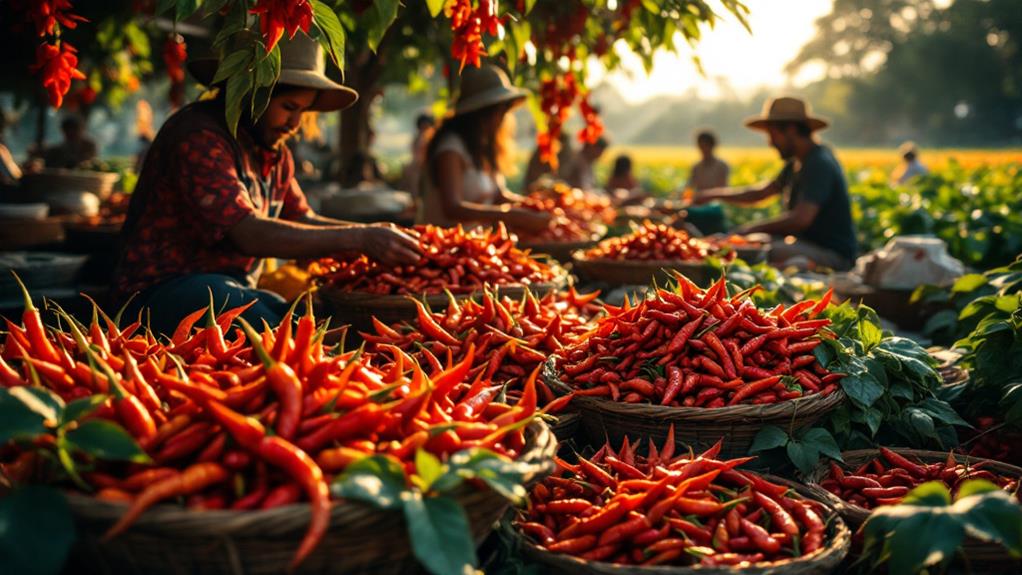
While the culinary potential of the Komodo Dragon chili pepper is undeniable, getting your hands on this fiery ingredient can be a bit of an adventure. In the U.K., you're in luck, as the Komodo Dragon pepper is widely available in supermarkets like Tesco. This ready availability makes it easy for spice lovers in that region to experiment with one of the hottest peppers around. However, if you're outside the U.K., sourcing fresh Komodo Dragon peppers becomes a bit trickier.
International markets often face limitations regarding availability, with fresh pods being particularly hard to come by. If you're a chili enthusiast looking to experience the intense heat of the Komodo Dragon, you might need to plan a little extra effort. Fortunately, seeds are available for purchase online, giving gardening enthusiasts the opportunity to grow this super-hot variety themselves.
Given the pepper's status as a top-tier choice for extreme eaters, careful sourcing is recommended. Verify you're prepared for its intense spiciness, especially if you're not accustomed to handling such high heat levels. By understanding your options, you can commence your own spicy adventure with the Komodo Dragon pepper.
Growing and Care Tips
Getting started with growing Komodo Dragon chili peppers can be incredibly rewarding if you follow some essential care tips. Initially, guarantee a successful germination phase by using heat mats. These provide the necessary warmth to kickstart your seeds' growth. Aim for consistent ambient warmth between 70-85°F (21-29°C) to activate the seeds effectively.
Next, focus on soil quality. Komodo Dragon chili peppers thrive in well-drained soil that's rich in nutrients. Incorporating organic matter into your soil mix can greatly improve plant health and growth. Here's a quick guide to getting it right:
- Heat Mats: Place your seed trays on heat mats to maintain consistent warmth.
- Ambient Warmth: Keep the growing environment between 70-85°F.
- Well-Drained Soil: Use a nutrient-rich mix, augmented with organic matter.
- Regular Watering: Avoid overwatering to prevent root rot.
Don't forget the importance of sunlight; these peppers need about 6-8 hours of direct sunlight daily. This exposure guarantees vigorous growth and the development of those coveted, high-heat peppers. By addressing these key areas, you'll be well on your way to cultivating impressive Komodo Dragon chili plants.
Market Impact and Reactions
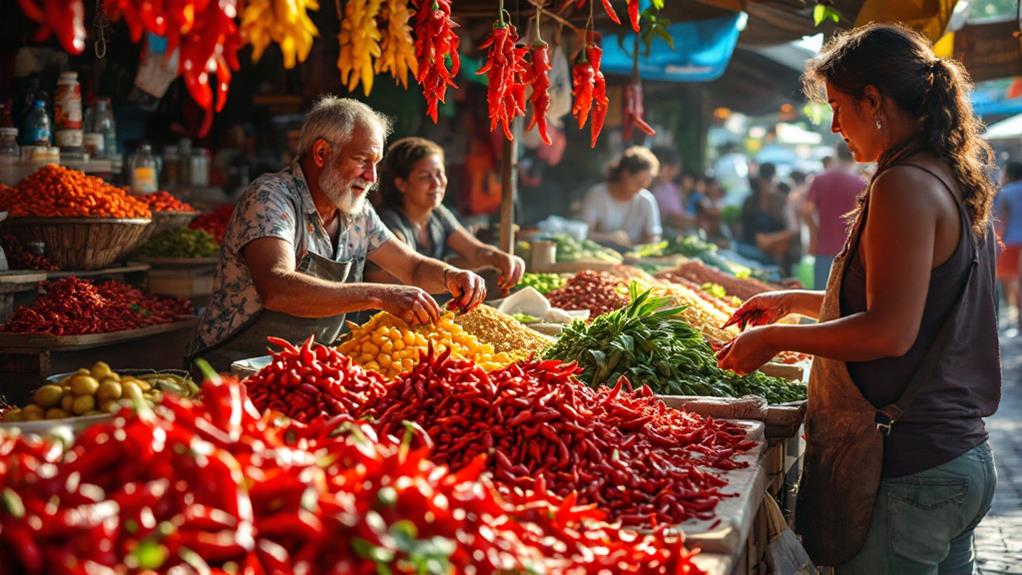
Upon its introduction in 2015, the Komodo Dragon chili pepper made waves in the UK market, especially as Tesco boldly marketed it as the hottest chili available. This claim sparked significant consumer interest, drawing both chili enthusiasts and curious shoppers keen to test its fiery reputation. However, consumer reactions were mixed, with some expressing disappointment over inconsistent heat levels reported by growers. While some peppers packed a punch similar to ghost peppers, others barely reached habanero heat.
The marketing frenzy surrounding the hottest chili pepper led to skepticism among some chili aficionados. The quest for the world's spiciest pepper created a cautious atmosphere, as many questioned the Komodo Dragon's true heat levels. This variability in heat and flavor sparked discussions within the grower community, who were eager on understanding the stability of the pepper's genetic traits. As a result, consumer trust and expectations took a hit.
Despite this, the Komodo Dragon still held intrigue. The ongoing interest in testing and trading seeds among growers highlighted a desire for transparency. Many enthusiasts remained hopeful, seeking clarity on the pepper's actual heat and flavor characteristics to satisfy their spicy curiosities.

